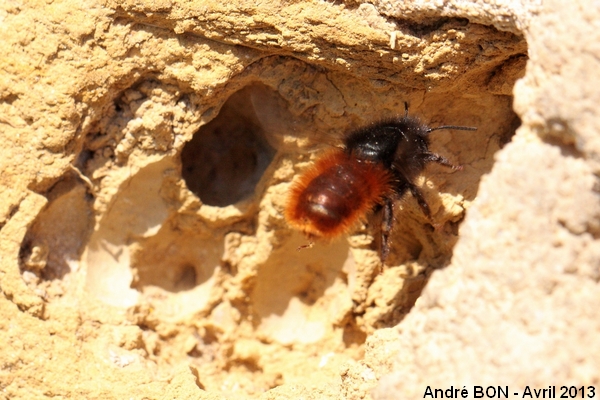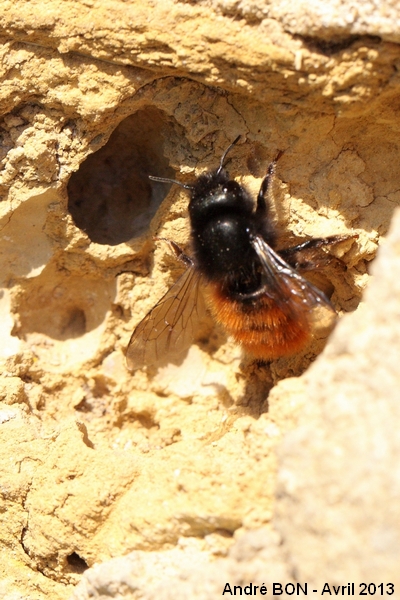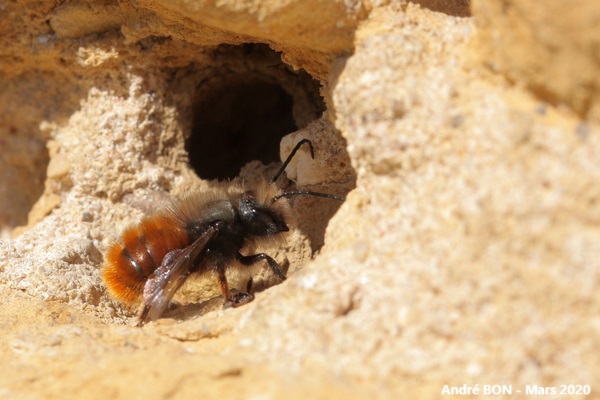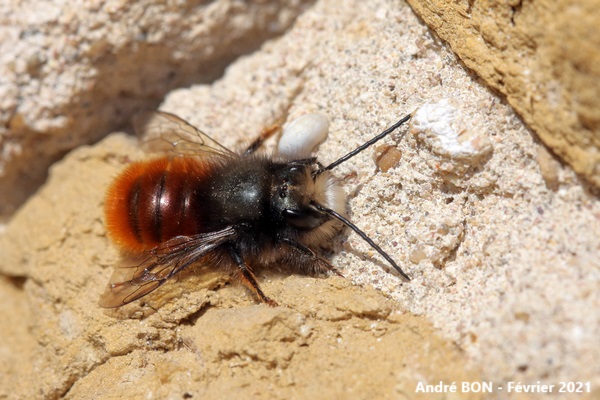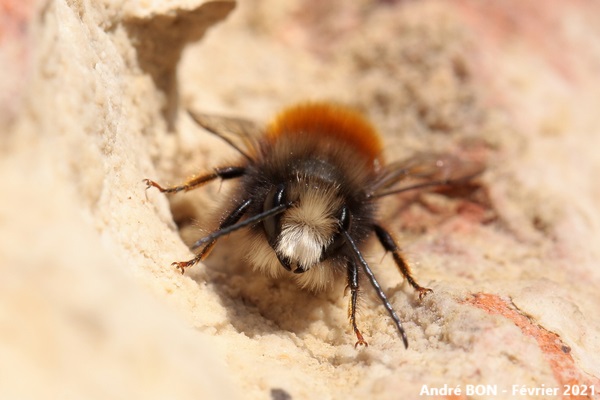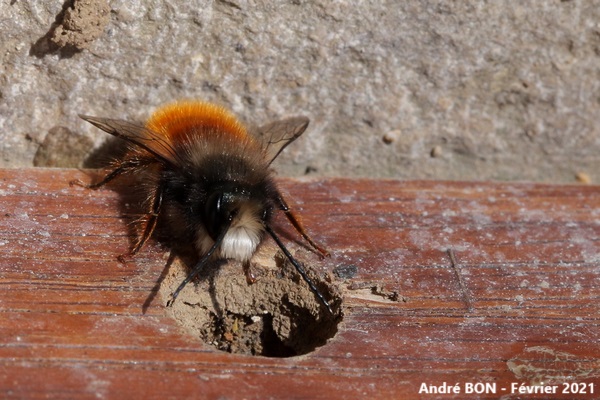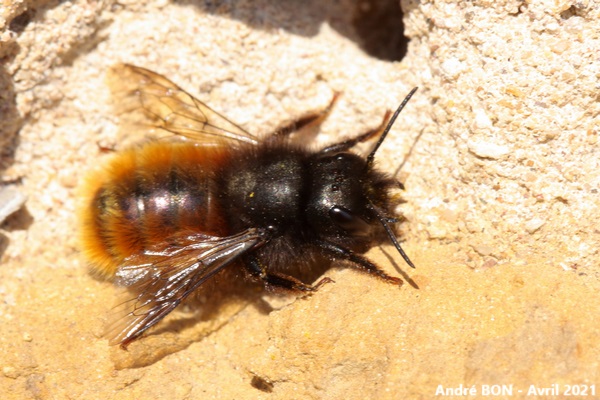Scientific name: Osmia cornuta (Latreille, 1805)
Common name:
French name: Osmie cornue
Order: Hymenoptera
Family: Megachilidae
Wingspan : 12 to 15 mm for females, 11 to 13 mm for males.
Biotope: Dry and sunny places, parks and gardens, urban areas.
Geographic area: Europe, missing in the northern regions.
Observation period : March to June. Males emerge about two weeks before females.
|
Bees of the Osmia genus are solitary mason bees nesting in hollow stems, small holes in walls or rocks, under the soil and even in empty snail shells for some species. The nests are masoned with a mixture of mud and saliva..
36 species of the Osmia genus are listed as present in France (about 300 in the northern hemisphere).
The fore wings show two sub-marginal cells. These bees do not produce honey but collect nectar and pollen with a ventral brush. There are pad-like lobes, called arolia, between the claws.
Female Osmia cornuta have black hairs on the head and thorax. There are two short horns on the front of the head.
The abdomen is covered with bright red hair. The abdominal brush underneath is rust-coloured. The antennae have twelve articles.
Males have much longer antennae with thirteen articles. They bear white hairs on the face and on the forehead. They do not have horns.
Red Mason Bee (Osmia rufa) have brown hairs on the thorax and on the front of the abdomen and black hairs at the rear of the abdomen. Males have yellow hairs on the forehead. Osmia bicolour is a smaller size than Osmia rufa. Females do not have horns.
Osmia rufa's nests are made of a series of cells inside a preferably straight cavity. Each cell contains a small ball of pollen and nectar with one egg. Cells closer to the opening are for males, the other ones are for females. The next brood will emerge next spring.
|














